
Space Shuttle Challenger (OV-099) was a Space Shuttle orbiter manufactured by Rockwell International and operated by NASA. Named after the commanding ship of a nineteenth-century scientific expedition that traveled the world, Challenger was the second Space Shuttle orbiter to fly into space after Columbia, and launched on its maiden flight in April 1983. It was destroyed in January 1986 soon after launch in an accident that killed all seven crewmembers aboard. Initially manufactured as a test article not intended for spaceflight, it was utilized for ground testing of the Space Shuttle orbiter's structural design. However, after NASA found that their original plan to upgrade Enterprise for spaceflight would be more expensive than upgrading Challenger, the orbiter was pressed into operational service in the Space Shuttle program. Lessons learned from the first orbital flights of Columbia led to Challenger's design possessing fewer thermal protection system tiles and a lighter fuselage and wings. This led to it being 1,000 kilograms lighter than Columbia, though still 2,600 kilograms heavier than Discovery.

STS-7 was NASA's seventh Space Shuttle mission, and the second mission for the Space Shuttle Challenger. During the mission, Challenger deployed several satellites into orbit. The shuttle launched from Kennedy Space Center on June 18, 1983, and landed at Edwards Air Force Base on June 24. STS-7 carried Sally Ride, America's first female astronaut.
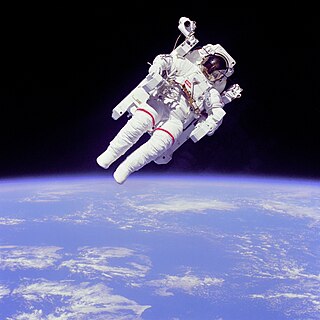
The Manned Maneuvering Unit (MMU) is an astronaut propulsion unit that was used by NASA on three Space Shuttle missions in 1984. The MMU allowed the astronauts to perform untethered extravehicular spacewalks at a distance from the shuttle. The MMU was used in practice to retrieve a pair of faulty communications satellites, Westar VI and Palapa B2. Following the third mission the unit was retired from use. A smaller successor, the Simplified Aid For EVA Rescue (SAFER), was first flown in 1994, and is intended for emergency use only.

STS-41-B was the tenth NASA Space Shuttle mission and the fourth flight of the Space ShuttleChallenger. It launched on February 3, 1984, and landed on February 11 after deploying two communications satellites. It was also notable for including the first untethered spacewalk.

Jerry Lynn Ross is a retired United States Air Force officer, engineer and a former NASA astronaut. He is a veteran of seven Space Shuttle missions, making him the joint record holder for most spaceflights. His papers, photographs and many personal items are in the Barron Hilton Flight and Space Exploration Archives at Purdue University. He was inducted into the Astronaut Hall of Fame during ceremonies in May 2014.
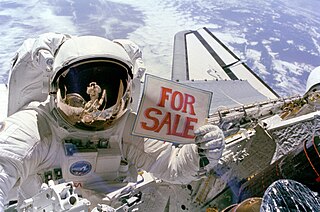
STS-51-A was the 14th flight of NASA's Space Shuttle program, and the second flight of Space Shuttle Discovery. The mission launched from Kennedy Space Center on November 8, 1984, and landed just under eight days later on November 16.

Frederick Hamilton "Rick" Hauck is a retired captain in the United States Navy, a former fighter pilot and NASA astronaut. He piloted Space Shuttle mission STS-7 and commanded STS-51-A and STS-26.

Joseph Percival "Joe" Allen IV is a former NASA astronaut. He logged more than 3,000 hours flying time in jet aircraft.
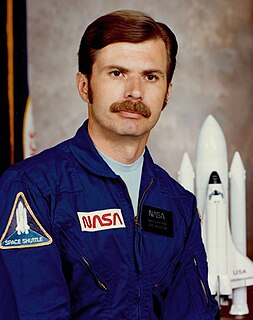
Dale Allan Gardner was a NASA astronaut, and naval flight officer who flew two Space Shuttle missions during the mid 1980s.

John McCreary Fabian is a former NASA astronaut and Air Force officer who flew two Space Shuttle missions and worked on the development of the Shuttle's robotic arm. He later led the Air Force's space operations.
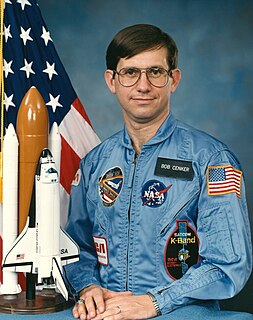
Robert Joseph "Bob" Cenker is an American aerospace and electrical engineer, aerospace systems consultant, and former astronaut. Cenker worked for 18 years at RCA Astro-Electronics, and its successor company GE Astro Space, on a variety of spacecraft projects. He spent most of his career working on commercial communications satellites, including the Satcom, Spacenet and GStar programs.

John Michael "Mike" Lounge was an American engineer, a United States Navy officer, a Vietnam War veteran, and a NASA astronaut. A veteran of three Space Shuttle flights, Lounge logged over 482 hours in space. He was a mission specialist on STS-51-I (1985) and STS-26 (1988) and was the flight engineer on STS-35 (1990).
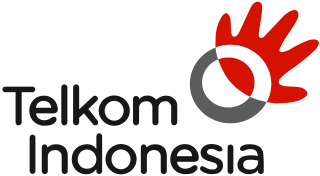
PT Telkom Indonesia (Persero) Tbk, also simply known as Telkom, is an Indonesian multinational telecommunications conglomerate. Telkom is listed on the Indonesia Stock Exchange and has a secondary listing on the New York Stock Exchange. The government of Indonesia owns over half of Telkom's shares outstanding.

Pratiwi Pujilestari Sudarmono is an Indonesian scientist. She is currently professor of microbiology at the University of Indonesia, Jakarta.

STS-61-H was a United States Space Shuttle mission planned to launch on 24 June 1986 using Columbia. However, it was cancelled after the Challenger disaster.
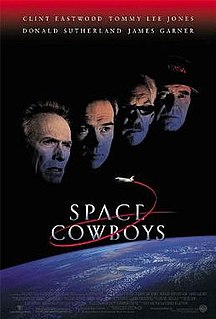
Space Cowboys is a 2000 American adventure drama film directed and produced by Clint Eastwood. It stars Eastwood, Tommy Lee Jones, Donald Sutherland, and James Garner as four older "ex-test pilots" who are sent into space to repair an old Soviet satellite.

Palapa is a series of Communications satellites owned by Indosat, an Indonesian telecommunications company. Starting with the first in July 1976, at which time Indonesia became the first developing country to operate its own domestic satellite system. The estimated cost for the project was US$1 billion.
Telkom-2 was a geosynchronous communications satellite built by Orbital Sciences Corporation (OSC) for Indonesia's state-owned telecommunications company, PT Telekomunikasi Indonesia Tbk. Telkom-2 was successfully launched on 16 November 2005, at 23:46:00 UTC and positioned in geostationary orbit, at 118° East for replaced Palapa-B4.

Telkom 4 also known as Merah Putih, is an Indonesian geostationary communication satellite built by Space Systems/Loral that is located at an orbital position of 108° East and is operated by PT Telekomunikasi Indonesia Tbk. This satellite is based on the SSL 1300 satellite bus and has a life expectancy of 16 years, this satellite was launched on 7 August 2018, at 05:18 UTC or 12:18 Jakarta Time, using the SpaceX Falcon 9 Block 5 launcher from Cape Canaveral Air Force Station, Florida, United States.
Telkom-1 was a geosynchronous communications satellite built by Lockheed Martin,, for Indonesia's state-owned telecommunications company, PT Telekomunikasi Indonesia Tbk. It operated for almost 18 years, more than two years past designed lifetime of 15 years.


















